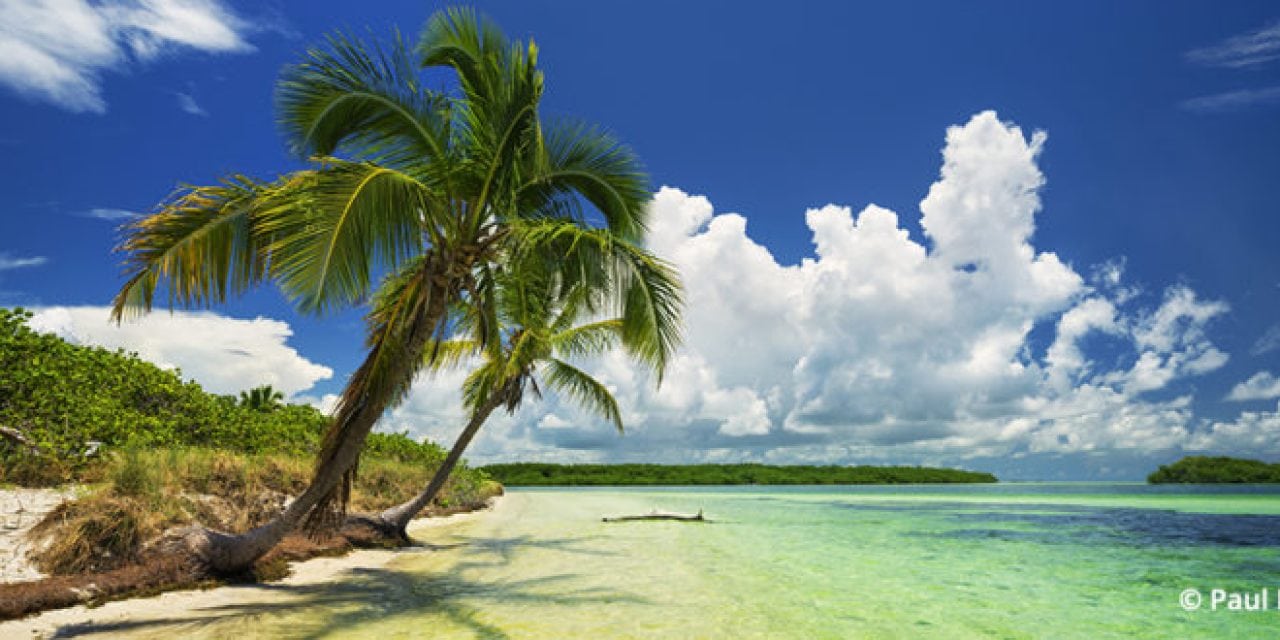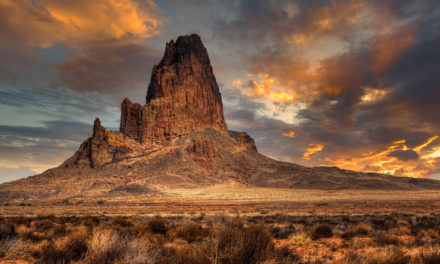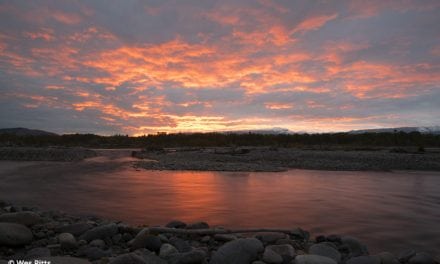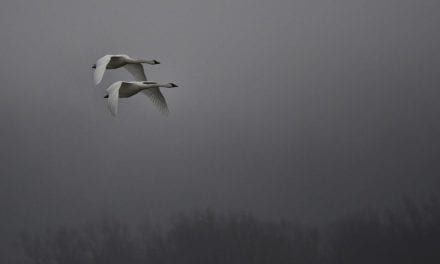Florida has so much to offer nature photographers, with freshwater springs, tannic swamps, pinelands, mangroves forests and expansive shorelines with barely another soul around. In this guide to Florida photo hot spots, I’ll share some of my favorite destinations across the state.
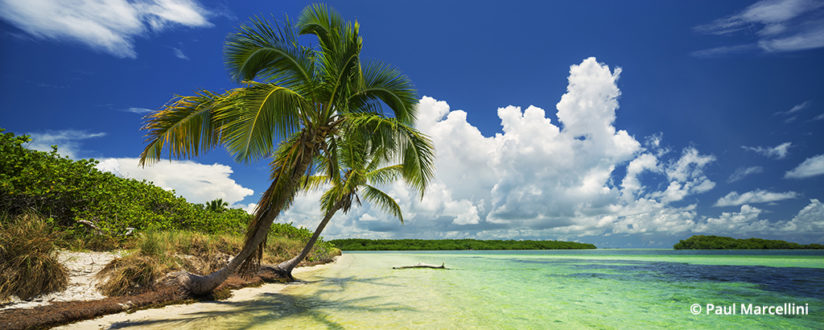
The Florida Keys are an outdoorsman’s paradise. A string of tropical islands off the southern tip of Florida, they offer miles of turquoise-water-lined shores. The lower keys, getting closer to Key West, offer more undeveloped land. This provides abundant options to shoot without trespassing, and state parks are one of the best for that. Curry Hammock, Long Key and my favorite, Bahia Honda State Park, all have camping and many photographic subjects. A landscape photographer can choose from mangroves and palms, to docks, beaches, bridges and rock piers as foregrounds. The many static subjects surrounded by water are perfect for adding a 10-stop neutral density filter and getting some long exposures, smoothing out the water and blurring the clouds.
Smathers Beach in Key West offers the tropical look of coconut palms in white sand. Wildlife abounds, including fiddler crabs, birds and iguanas. A real treat are the endangered and dwarfed Key deer. Inhabiting the lower islands around Big Pine Key, they offer many unique photographic opportunities as they graze on mangroves and the wrack line of the beach. Add in an average width of less than a mile, and it doesn’t take much travel time to go from a sunrise to sunset shooting locations, which means more time for piña coladas during the harsh midday light.
Another amazing trip is to Dry Tortugas, just 70 miles west of Key West. You can take a ferry or sea plane and spend the day, or primitive camp, alongside the largest brick masonry structure in the Americas. The snorkeling and diving are also superb, so if you are an underwater photographer, make sure to bring your gear. Topside also offers migratory birds and beautiful scenes of the bluest water contrasting with the red brick. If you take the sea plane, you can also shoot aerials during the flight.

When people think of South Florida, and Miami in particular, I doubt the 1.5 million acres of the Everglades, 700,000 acres of Big Cypress National Preserve or the 170,000 acres of Biscayne National Park pop in their mind first. It’s amazing to have so much wild and protected land less than an hour away from a major metropolitan area with more than 5 million people. The Everglades has a vast amount of biodiversity in its plant life and wildlife, a subtropical wetland offering bird, wildlife and macro shooters an endless supply of subjects. And though it might take a little more work compared to the majesty of the Tetons, the open prairies and stunning summer skies are just as beautiful. As a landscape photographer, I see the Everglades in the visually different landscapes: the open, wet prairies, the pine rocklands, the dwarf cypress out in the open, the larger cypress of the domes and strands, the mangroves and the salt marshes near the coast. This lends a portfolio diverse in subjects while also avoiding cliché and oft-shot icons.
My personal favorite habitat is the pine rocklands, a globally imperiled habitat with the highest floristic diversity in the state. It harbors many endemic plants and animals, and has abundant macro subjects. For the wildlife photographer, the winter is the time to visit. Low water concentrates wildlife and is also the time for wading birds to breed. Anhingas, cormorants, tricolor, little blue and great blue herons, snowy and great egrets and the showy roseate spoonbill. Of course, you can’t forget the alligators and, closer to the coast, crocodiles. The Everglades is the only place in the world where you can see both together.
Big Cypress is essentially a northern extension of Everglades National Park but does offer some differences in habitat. It is “upriver” and has deeper water and channels in the “River of Grass,” allowing for larger cypress and more scenery typical of what many might picture as swamp. Shooting among the shade of the cypress is always a special time for me. Turner River is a nice canoe trail through a mangrove tunnel covered in epiphytes. It is a wonderful chaos of foliage. Big Cypress also gives wildlife photographers the chance to photograph herons hunting among the trees, and in low water during the winter, otters will spend the day hunting the remaining puddles. And there is the chance of seeing a panther, one of the rarest mammals in North America.
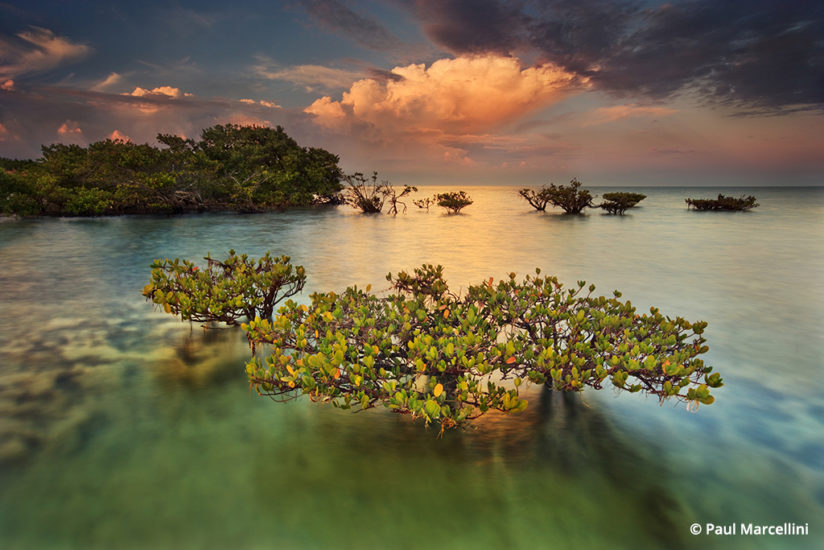
Biscayne National Park doesn’t offer as much access by land but is amazing if you have boat or kayak access. One of the more unique parts of Biscayne is Stiltsville, on the northern end. These are stilt houses built starting in the 1930s and used as party houses and bars. At the peak, there were 27, but after Hurricane Andrew in 1992, only seven remain. They can only be accessed by boat, but there are tours that can take you. Most of the houses have bright paint and stand out nicely against the blue water and sky. Other locations to visit are Boca Chita and Elliott Key. They offer unique mangrove shorelines, and Boca Chita has a beautiful lighthouse built with the local limestone. You can stare at downtown Miami across Biscayne Bay while you camp at Boca Chita in relative peace and quiet.
In central Florida is one of my favorite places in the state. Fisheating Creek is the last free-flowing tributary that feeds into Lake Okeechobee, the largest lake in Florida. It offers over 40 miles of cypress-lined shore and is best explored by kayak or canoe. When out on the creek, you truly feel like you are going back in time, to an untouched Florida. The main access is at the Fisheating Creek Outpost in Palmdale. There you can launch a boat and explore on your own, or you can also have a guide take you 9 or 18 miles upstream, so you can take your time and float with the current. The 18-mile trip is a great overnight trip, which allows a landscape photographer to plan a location for sunrise the day before and camp right at it.
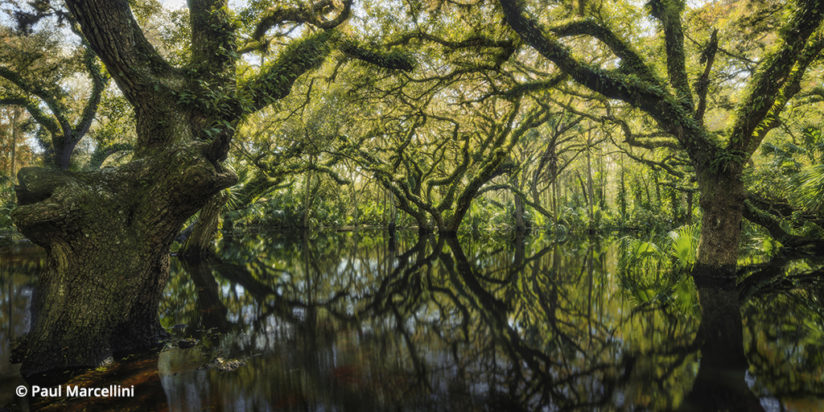
My favorite aspect of the creek is that the land bordering it is either publicly owned or part of conservation easements, so you can camp anywhere. Another great thing about Fisheating Creek is how much the look changes as the water fluctuates. In high water in the summer wet season, the creek can overflow its banks and create a vast flooded forest. But in low water in the winter, the sandy banks are exposed as well as all the unique cypress bases and twisted roots and knees. Low water also concentrates the wildlife around the creek, allowing for views of deer, hogs, raccoons, multiple bird species, turtles and, of course, alligators. The cypress are also deciduous, so the entire landscape changes in color throughout the year. Florida isn’t known for fall color, but with the right conditions, the cypress can take on a nice orange to rust tone instead of going straight brown. In the winter, it is very barren but makes for good black and white images with the architecture of the trees, the white sand and the tannic black water. But in the spring the fresh greens are amazingly vibrant and that black water reflects them very well.
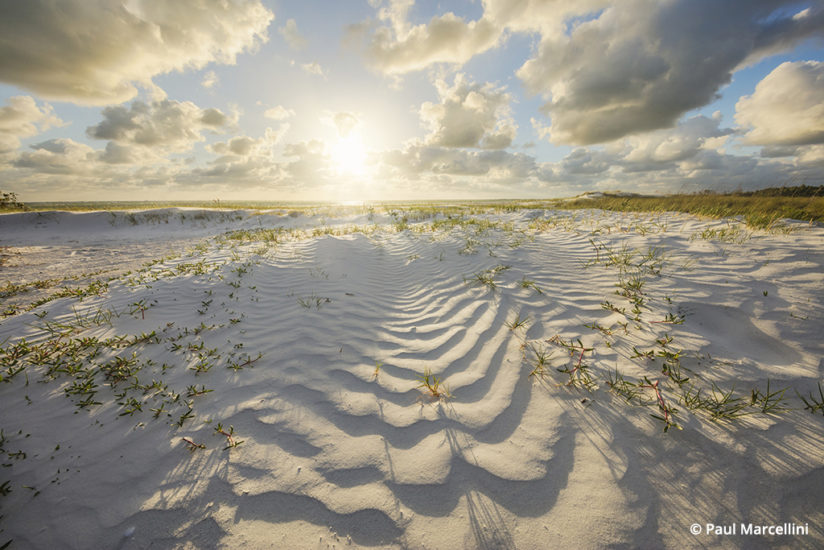
Moving to the north and west is St. Petersburg, and it is home to one of the top-rated beaches in the nation. Fort De Soto Park is 1,136 acres with beach, palm hammocks, wetlands and hardwoods. It is a bird photographer’s paradise, with year-round wading birds and a hot bed for migrants to stop and take a breather. More than 300 species of birds have been documented in the park. It offers 7 miles of waterfront, with angles at sunrise and sunset for the landscape photographer. The beach has soft, sugary sand that typically looks clean in the morning, erasing tracks from all the people the day before. I like that it is not a simple beach but has some lagoons behind the initial dunes, so it gives you more options for landscape photography as well. And for the bird photographers, because this is a popular area, you will find that the resident wading birds are much more tolerant and used to people. The back lagoons also typically have calmer water, allowing for smooth, simple wading bird shots with clean backgrounds. There are over 200 campsites in the park, allowing for quick access to images.
Continuing north about two and a half hours is the great little town of Cedar Key. While all the surrounding area is prime for photography, Cedar Key offers a convenient home base. It is an artsy little town that reminds me of Key West, an old-fashioned fishing village with several delicious seafood stops. What I visit for is the coastal salt marsh with palm islands and pines growing down to the creeks at times. I love finding a snaking tidal creek to use a foreground leading line. There are many islands to which a guide can take you for images with driftwood scattered on the beaches and even palm trees growing right to the water’s edge. Back in town there are docks and piers that make for great long exposures, and the night sky is one of the darkest in Florida, ideal for Milky Way images in the summer.

Just a bit north of Cedar Key is Shell Mound, with a campground and observation deck that makes a great spot to get elevated for sunset. This spot also reveals some of the history of the area, where a mound of oyster shells was built up over a 1,000-year period by Native Americans. There are some hiking trails that give access to wildlife photographers. I have seen raccoons, wading birds, bobcats and dolphins.
Heading inland, we get to Ginnie Springs, a private campground on the Santa Fe River with several freshwater springs on the property and many more in the surrounding areas. The property is developed, but the right angle can get you a purely natural shot. Ginnie is a good base camp, as it offers full service sites and even WiFi now.
Just up the road is Blue Spring State Park, and you can actually paddle between Ginnie Springs and here, encountering several smaller springs along the way. The springs of Florida are an amazing natural wonder, pumping out clear water from the aquifer. Sadly, many springs are in decline due to fertilizer runoff, and because some are pumping out decades-old water, we are just now seeing effects from years of pollution long ago. The springs pump out water in the 70-degree range, so there is typically a misty atmosphere whenever the night temperatures take a dip. In the summer, they are a great escape from the heat.
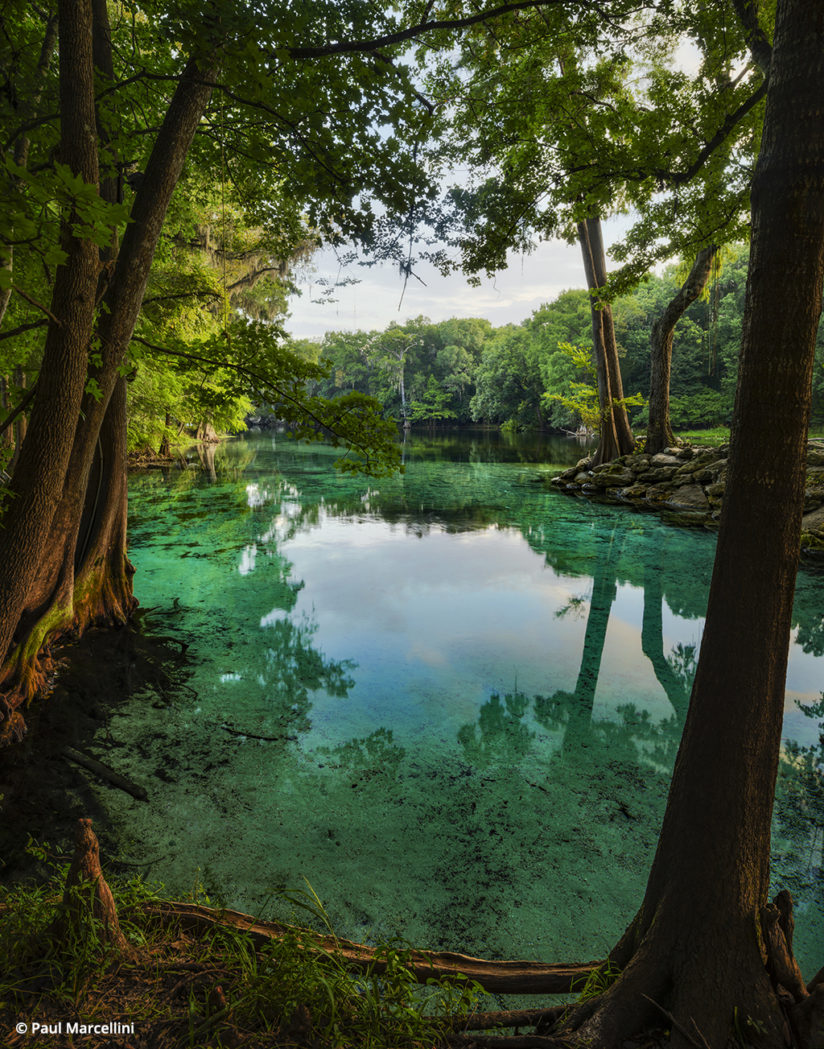
Ginnie is also a popular location for cave divers, and from the images I have seen, it is a totally unique and beautiful world down there. There are many springs along the Suwannee and Santa Fe rivers, and both have boat ramps scattered up and down, allowing someone to drop a canoe or kayak in and explore many different-length paddling trips. Many times, the shorelines are also lined with some large buttressed cypress due to the water level fluctuations in the different seasons. Another hot spot for springs is Ocala National Forest, but springs are found throughout north and central Florida.
I hope this small taste of Florida puts it on the map when looking for your next photographic destination. If the scenery and my descriptions aren’t enough, just remember that you can be taking photos in shorts and flip-flops year-round in most parts of the state.
See more of Paul Marcellini’s work at paulmarcellini.com.
YOU MIGHT ALSO LIKE

Florida’s Venice Area Audubon Rookery
The Venice Area Audubon Rookery is home to multiple species of birds, such as great blue herons, great egrets and anhingas. Read now.
The post Florida Photo Hot Spots appeared first on Outdoor Photographer.

